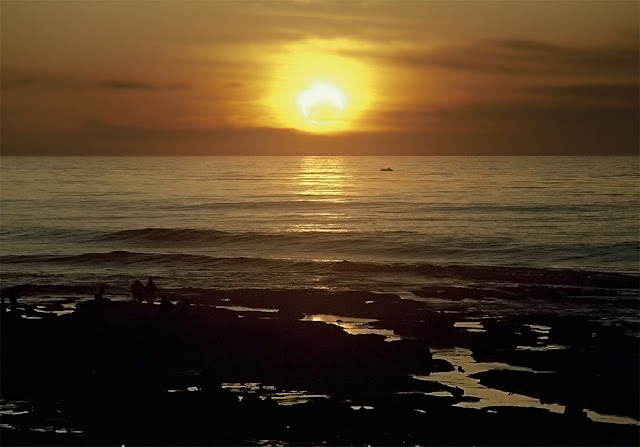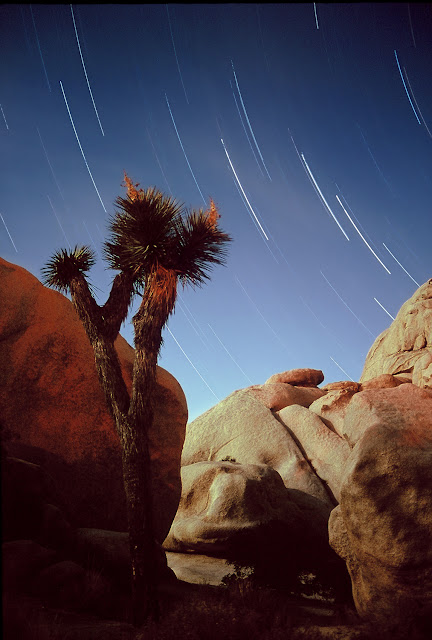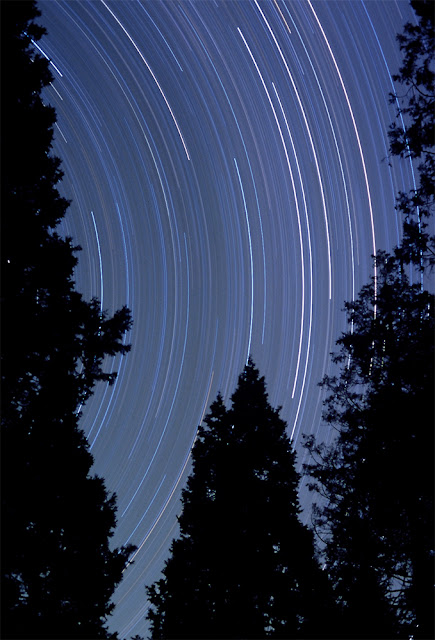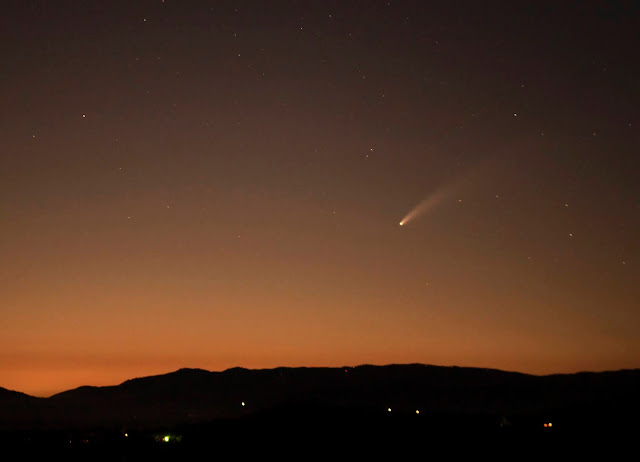Around 1990, I was dabbling in all sorts of outdoor and nature-related photography, including making some rough attempts at astrophotography.
One of the nicer events of the early '90s was the annular eclipse in January 1992. It was visible from San Diego, and easily photographed from the coast (I chose La Jolla to shoot it from).
 |
| Annular eclipse of the sun, January 4, 1992, La Jolla, California. From a scanned 35 mm slide. |
I also experimented with star streaks and had a lot of failures. I did get two images that I'm fairly happy with, though: one from Joshua Tree National Monument (then), and the other from Palomar Mountain.
 |
| Star streaks, Joshua Tree National Monument. September 1995. From a scanned 35 mm slide. |
 |
Star streaks, Observatory Campground, Palomar Mountain, California. Late 1990s.
Scanned from a 35 mm slide. |
I have tried some astrophotography in more recent years since acquiring my first "decent" DSLR, with mixed results.
But when I heard about the comet NEOWISE, I thought it would be fun to try for some photos, especially as for some reason I did NOT photograph the more spectacular Hale-Bopp in the 90s (I think I was more interested in other photographic subjects at that time).
So here are my best images of NEOWISE, shot over the past several days. Digital noise has not been my friend and better equipment combined with some different photographic approaches will likely help in this area in future! Shooting with my 60 mm macro has worked, but I could do much better with a wide angle lens, and a new camera body.
 |
| NEOWISE over Palomar Mountain, photographed from my patio, Cuyamaca Woods, Julian, California. July 13, 2020. Canon EOS Rebel T1i. Canon 60 mm macro lens. |
 |
| NEOWISE over Palomar Mountain, photographed Cuyamaca Woods, Julian, California. July 14, 2020. Canon EOS Rebel T1i. Canon 60 mm macro lens. |
 |
| NEOWISE from the Anza Borrego Desert, California. July 15, 2020. Canon EOS Rebel T1i. Canon 60 mm macro lens. |
One last photo, from July 17. The comet was higher in the sky, allowing more stars to be included in the image.
















